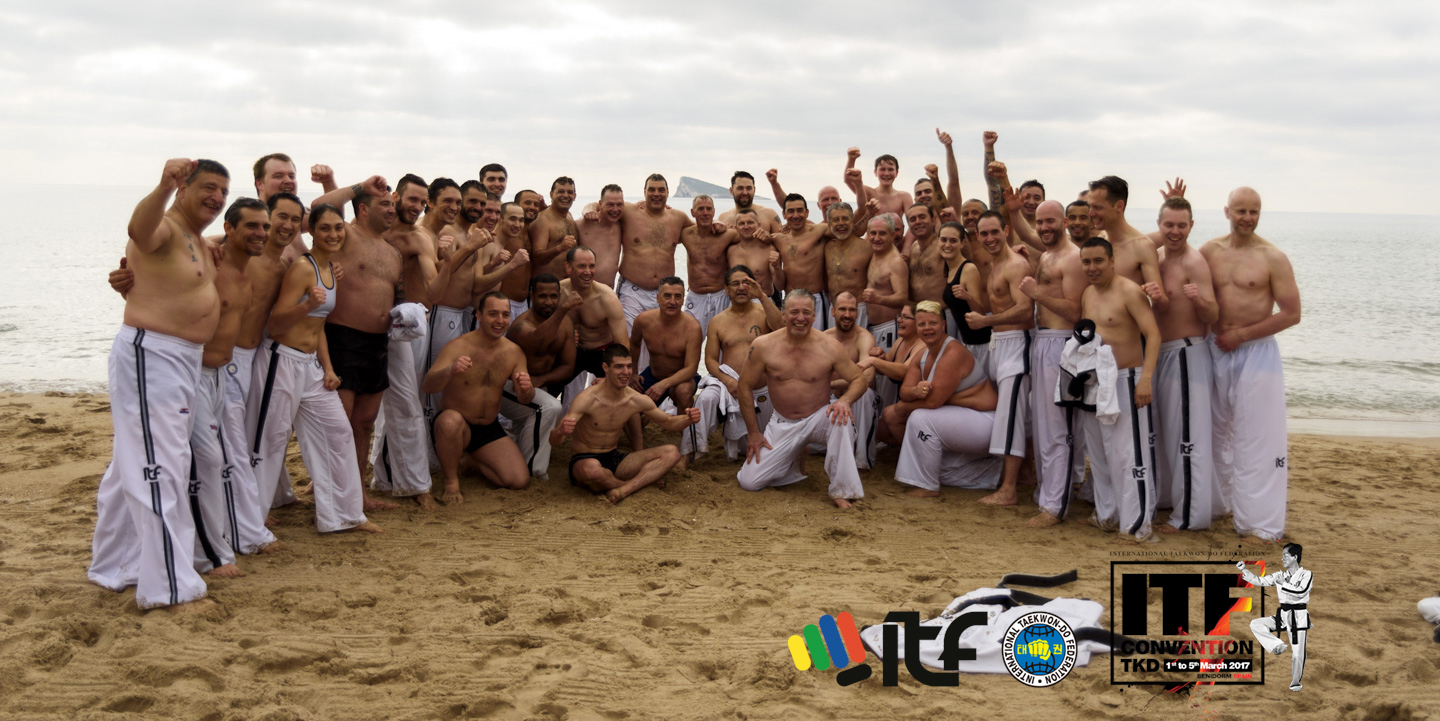ITF Instructors’ Convention Spain 2017 – Mr Mark Banicevich VI Dan
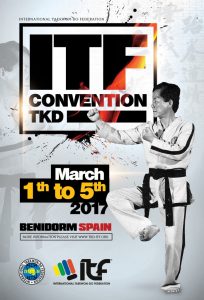 I love Spain. Despite visiting at the end of winter, temperatures were 20-25 degrees, and skies were clear. And I missed the torrential rain in the Auckland summer. I missed my first ever NZ IIC, so I could arrive a couple of days early to prepare with the Do Committee.
I love Spain. Despite visiting at the end of winter, temperatures were 20-25 degrees, and skies were clear. And I missed the torrential rain in the Auckland summer. I missed my first ever NZ IIC, so I could arrive a couple of days early to prepare with the Do Committee.
The first Convention was five years ago at the same place – Hotel Bali in Benidorm, Spain. Miss Carolina Dillen and I attended. It was so good, that I couldn’t miss another!
This one was smaller, which made it very intimate. Over 100 instructors, from over 20 countries. I was the only attendee from New Zealand, and there were two from Australia (Master Daher and Master El Sheikh). Other attendees came from across Europe and the Americas. About a third were Spanish-speakers, and two-thirds could get by in English – even my Jamaican friend, Mr Barrows!
I’ll give you a few notes from the best sessions:
Growth sessions: Master Andresen, Mr Rugsveen and Mr Byrne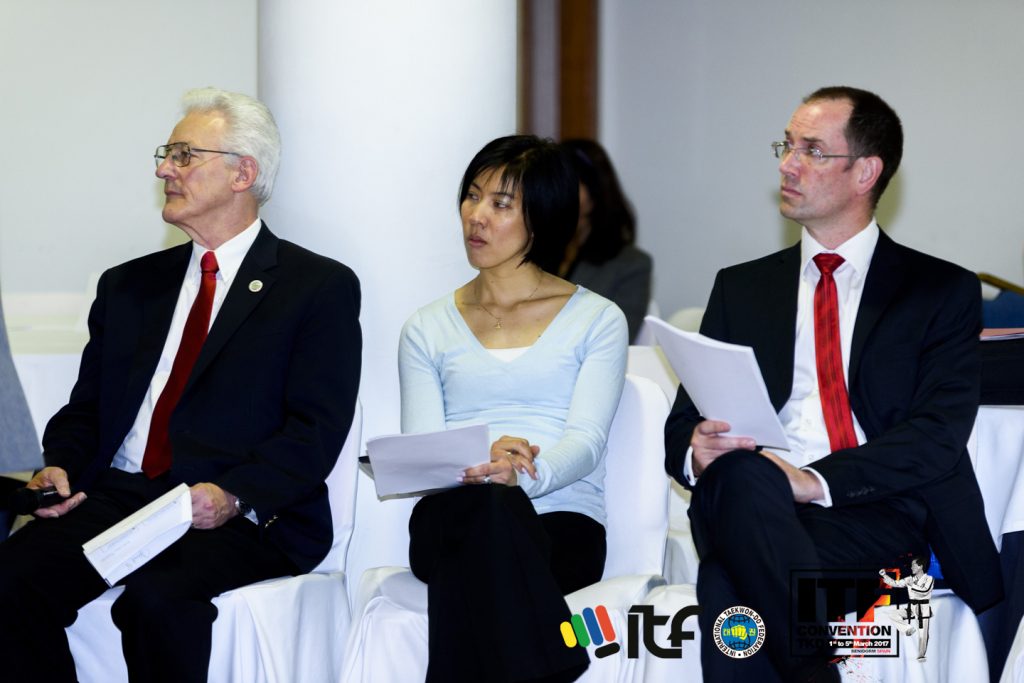
When Master McPhail and I meet Master Per Andresen of Norway, we had about 3,000 members in NZ, and they had about 4,000. We were both on strategic missions. NZ had just changed to a Board structure, and we sought growth without reducing quality. So did they.
Here we are, just over 10 years later. We have 3,500 members. Norway has over 11,000! What is the difference? They did it.
Two of our primary objectives in 2005 were to develop instructors and retain students. Master Andresen’s session was about Norway’s structure and instructor development. Mr Rugsveen works at Master Andresen’s school. His session was about student retention at their school of 1,400 members. (Yes, in one club.)
Ireland, too, have focussed on instructor development, and grown from about 1,000 members to 6,000 members in a similar timeframe. Their basic instructor qualification requires 30 hours of structured training, and about the same of unstructured learning.
Both countries are jumping the rankings in international competition – their quality has increased, too.
There are exciting lessons for New Zealand in their success.
Physical sessions: Mr Ca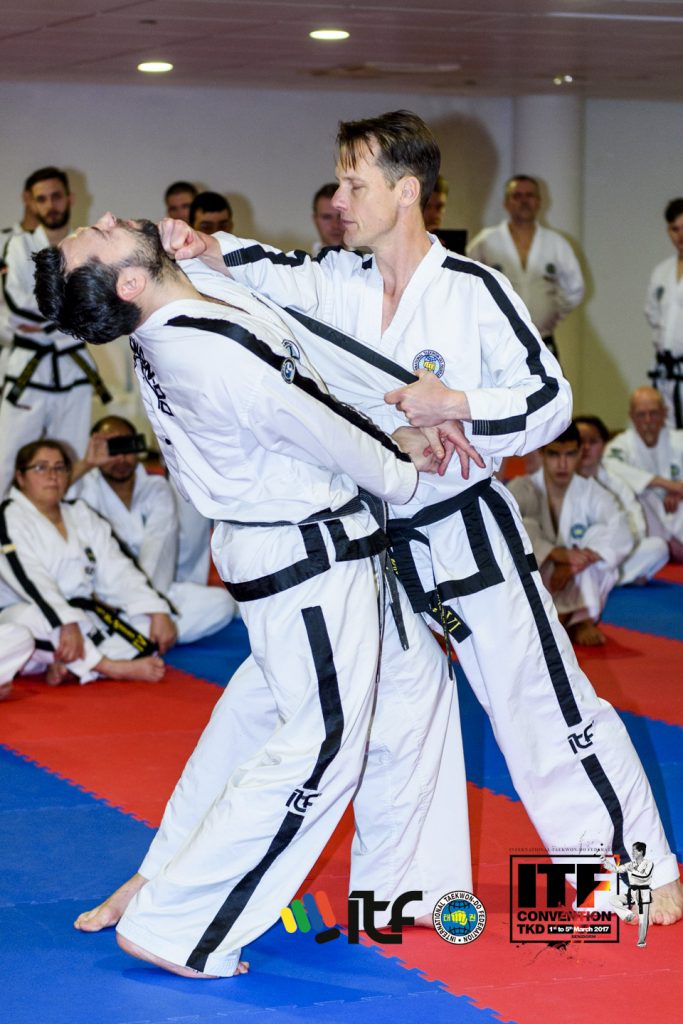 sero, Messrs Rolstad and Boer, Grand Master Bos, Grand Master Weiler, Grand Masters Marano and Lan
sero, Messrs Rolstad and Boer, Grand Master Bos, Grand Master Weiler, Grand Masters Marano and Lan
It’s not a Taekwon-Do event without some training! Mr Casero introduced us to the Harmony programme. We have had a chance to learn about this at our own Conference in June. It is awesome. For me, a key takeaway was its similarities with the Taekwon-Do Kids Development Programme. In 20 years, I see a possibility that the same themes could carry through all of our programmes, because in the main programme we teach the same things in an unstructured way: balance, memory, coordination, etc. Harmony has one significant addition. It highlights the importance of providing social interaction for our elderly.
I thoroughly enjoyed the session with Messrs Rolstad (Norway) and Boer (The Netherlands). It reminded me of training with Master Pellow in the ’90s. “How to use fundamental movements from the patterns, into practical self-defence.” They had us throwing each other around and smacking each other with alternative interpretations of basic pattern movements. It was a lot of fun.
Grand Master Bos had us hitting each other on the beach early Friday morning. We earned a few bruises. Saying “hello” the Bos way was an introduction to a great conditioning class. It ended with a bunch of us taking a dip in the frigid waters of a Spanish winter ocean. Master Davidson would have been in his happy place.
Grand Master Weiler took the opening session, on mobility. He took one last Convention, too, and his sessions always impress me. They seem so easy, but by the end of the hour, we’re sweating impressively! Grand Master Weiler was a physical education teacher, and he imparted some excellent knowledge of anatomy. Something every instructor should know better than we do.
Grand Masters Marano and Lan split us into Masters and others for the patterns session. Rather than correct movements one-by-one, Grand Master Lan took a wonderful principles-based session.
Morality: Dr Carreres, and the Do Committee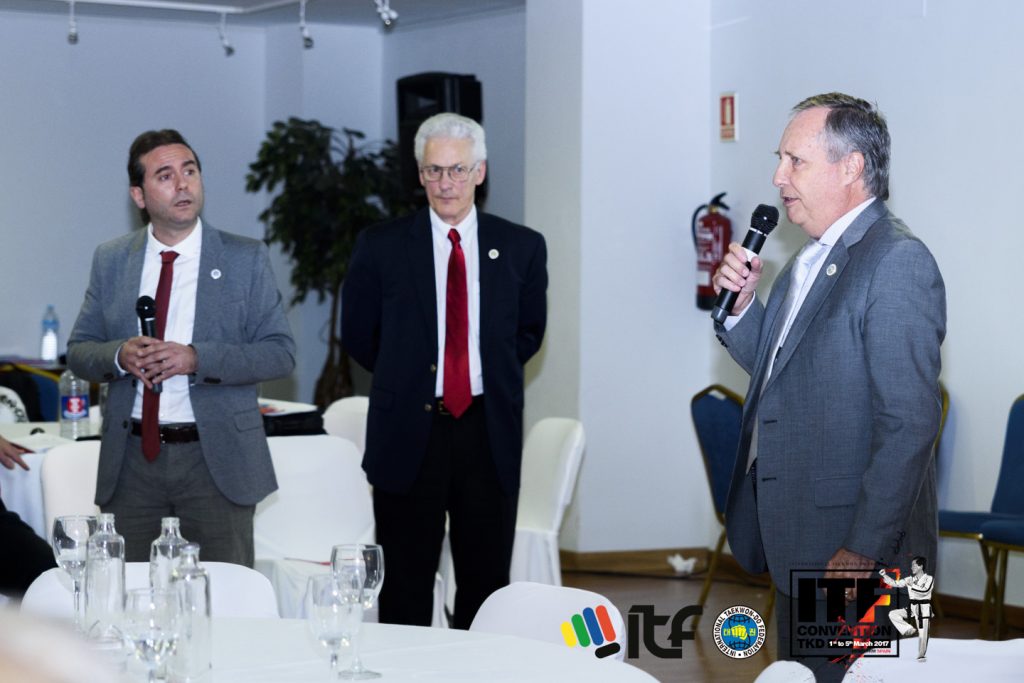
Dr Carreres presented about the teaching personal and social responsibility model. The model fits well with our martial art, and our focus on the Do, and it fed nicely into our Committee sessions.
Dr Gauthier, Master Tran, Mr Martinez and I worked for two days before the Convention to plan our two two-hour sessions thoroughly. (When Mr Boer arrived, he asked me how we were going to run a session with four instructors. I said, “Preparation”.)
Last Convention we ran eight hours of physical training focussed on the Do, so this time we changed our approach to facilitated discussion. In the first two hours, we outlined the Do, and introduced models of moral development and human behaviour. Master Tran and I performed a skit to illustrate using the Do as an instructor to improve our teaching methods, and attendees discussed how we could use the Do to improve student retention. In the second session, we challenged attendees with discussions about loyalty and analysed issues using the models of behaviour and the tenets of Taekwon-Do. Then we discussed strategies for teaching the Do.
At the end of the sessions, Grand Master Trajtenberg announced Board support for an International Do Course, and bookings for the course are now open. Initially they would like courses run in Canada, Europe, and… New Zealand. Are you keen?
A social and learning event
There were several times during the event I thought about the many New Zealand instructors who would have loved the Convention. It doesn’t have the pressure of a tournament. Attendees are relaxed, and we share ideas over food and wine.
Master Ferrando tells me they want these Conventions to be regular events, hosted from continent to continent. Make the effort – you won’t be disappointed.
Mr Mark Banicevich is a VI Dan from Paul M Glendowie and a member of the Do Committee

